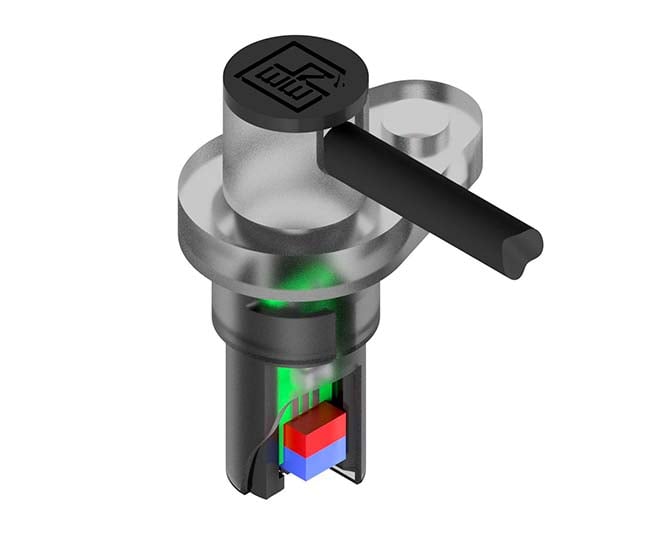Technical features
.png?width=800&height=799&name=Sensore%20di%20velocit%C3%A0%20flangiato%20(mini).png)
Hall effect speed sensors detect the rotary motion of any ferrous object with cracks or projections, typically gears and tone wheels. They incorporate a back-polarised Hall effect chip which detects the variation in the magnetic field according to the full/empty position of the wheel and provides a digital frequency signal at the output.
In the dual output versions, by reading the two signals A and B, it is possible to determine clockwise or anti-clockwise rotation: in particular, the direction of rotation can be determined from the advance or lag phase between two square-wave signals or from a switching signal. Flanged speed sensors have the advantage of being easy and quick to install, without the need to adjust the position.
Mechanical configurations
Various mechanical body configurations available, varying in length under head, diameter and materials. Possibility to create customised versions.
Applications
Elen speed sensors find typical application on engines, differentials, transmissions, turbines, pumps and are able to operate in the most severe conditions of temperature, pressure, vibrations, electromagnetic disturbances and external agents.
Construction features

